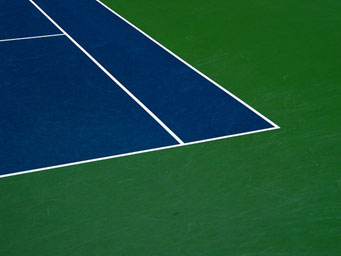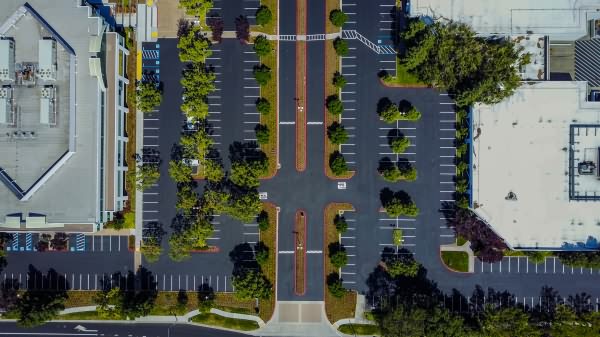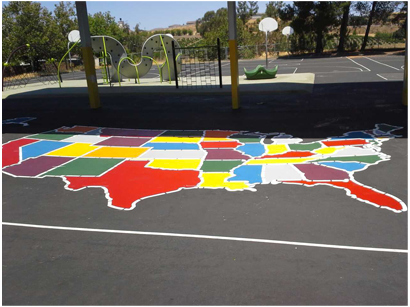
Choosing the right playground surface can be challenging. The ideal surface provides an inviting and safe playground experience, balancing overall cost and maintenance needs. Does concrete or asphalt for playgrounds offer the best solution for your Bay Area, San Jose, Vacaville, Pleasanton, or Oakland recreational facility? Our playground construction and paving experts have the information you need to make the best decision.
Placement of Asphalt and Concrete Surrounding Play Equipment is Crucial
The US Consumer Product Safety Commission (CPSC) recommends against using concrete or asphalt directly under play equipment due to the potential for injury. These surfaces do not provide enough shock absorption to guard against serious harm in the event of falls from play equipment.
Where to Place Concrete and Asphalt Around Play Equipment
Although concrete and asphalt offer a durable solution for walkways and sports courts, according to CPSC playground construction use and safety rules, it’s best to avoid placing concrete and asphalt in the “fall zone”. This area extends a minimum of six feet in all directions from the edges of play equipment. Beneath swings, the fall zone extends twice the height of the swings – both in front and in back.
Instead, you should use loose-fill materials like mulch, pea gravel, sand, and shredded rubber in these areas. Other longer-lasting, lower maintenance, and ADA-friendly options include artificial turf or poured-in-place rubber over concrete. The height of play equipment will determine the necessary depth of material to ensure adequate shock absorption in the event of falls.
Choosing Between Asphalt and Concrete for Playground Surfaces
When choosing between asphalt and concrete for surrounding walkways and sports courts, initial investment, pavement lifespan, and maintenance cost must be considered. Each surfacing option offers benefits and drawbacks:
- Asphalt for playground surfaces
- Made by aggregates bound with bitumen from crude oil
- Lower installation cost
- Lifespan of about 30 years
- Lower maintenance costs compared to concrete
- More flexible surface
- Less uniform surface, but enhanced traction
- Requires resurfacing and resealing every 5 years
- May become sticky in high temperatures
- Concrete for playground surfaces
- Made of aggregates including crushed rock, sand, cement, and water
- Higher installation cost
- More durable than asphalt, offering up to 50 years of use
- Costlier to maintain than asphalt
- Harder surface than concrete
- Smoother surface texture
- Requires occasional degreasing
- Drains well with proper site prep
Sport Court and Play Area Options

The pavement design and installation team at American Asphalt offers a range of options to meet your unique needs:
- Basketball
- Tennis and pickleball
- Volleyball
- Shuffleboard
- Gaga Ball
- Cornhole
- Hopscotch
- Checkers and chess
- 4-square
- Multi-sport court
- Custom courts
Bright, Colorful Designs and Striping to Enhance Your Play Area
Our striping team can transform dull surfaces into dynamic, attractive play areas with bold, colorful designs. In addition to striping for sports courts, we can also incorporate customized designs. Add your school or business logo or customized artwork. Emblazon the alphabet, numbers, or shapes. Point the way to play equipment with colorful directional markings using paw or footprints, and more, creating a whimsical play experience that entices even the shyest child.
Ensure a safe, fun playground design with the right combination of concrete or asphalt for playgrounds and shock absorbent playground materials. Contact American Asphalt at 510-723-0280 and speak to one of our paving design experts today.
Related Blog Posts


